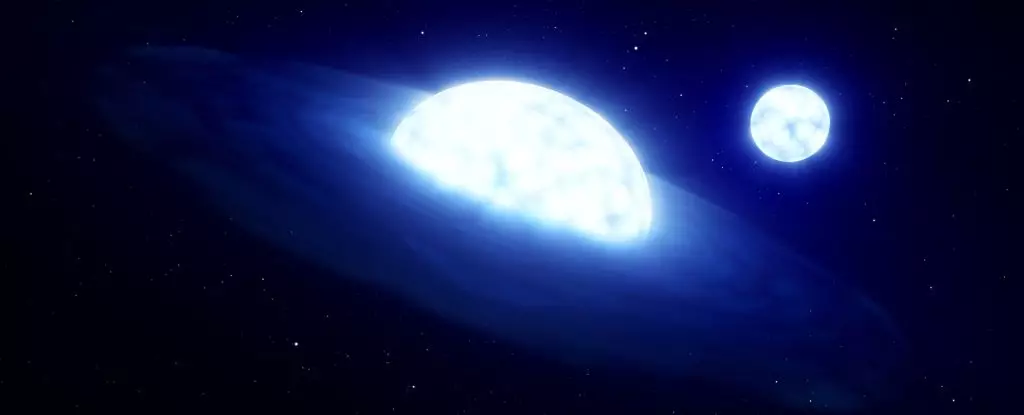In an ironic twist, it appears that vampires may not only exist in folklore but also in the depths of space. These extraterrestrial bloodsuckers, known as “stellar vampires” or Be stars, have recently captured the attention of astronomers. Be stars are a type of B-type star, characterized by their extreme heat, intense brightness, and vibrant blue color, with temperatures reaching up to a scorching 30,000 Kelvin. What sets these stars apart is their rapid rotation and the presence of Balmer emission, which are specific wavelengths of light emitted by hydrogen atoms. The origin of this emission has been attributed to either a disk of material swirling around the star or a phenomenon known as stellar vampirism, which involves the gravitational stripping of a companion star by a more massive star.
Unmasking the Triple-Star Systems
The prevailing theory had assumed that Be stars existed in binary systems. However, a groundbreaking study led by astronomer Jonathan Dodd from the University of Leeds in the UK suggests otherwise. By employing the technique of astrometry, which involves tracking the motion of stars across the sky over extended periods, the team aimed to uncover the elusive companions of these mysterious Be stars. Surprisingly, their findings revealed a potential twist in the tale.
Contradictory Discoveries
Initially, the researchers observed that Be stars appeared to have a lower rate of companions compared to their counterparts, the B stars. This unexpected result puzzled the team as they had anticipated the Be stars to exhibit a higher rate of companionship. Perplexed by this contradiction, the astronomers decided to investigate companion stars with a wider orbital separation. Remarkably, their analysis unveiled something intriguing.
Unveiling the Lurking Companions
The evidence from the wider separation analysis suggested that the rate of companions for both B and Be stars was relatively similar. This leads to a compelling hypothesis that the missing companions may not actually be missing after all. It is conceivable that these companions, having fallen victim to their larger counterparts, have become too small, low-mass, and faint to be easily detected by current observational techniques. If their orbits have decayed, bringing them closer to the Be stars, attempting to observe them might be as challenging as detecting a single, diminutive LED light next to a powerful searchlight from a considerable distance.
The implications of these findings extend far beyond the existence of these enigmatic stellar vampires. This discovery sheds new light on our understanding of the formation, growth, and evolution of stars within our galaxy, as well as their ultimate demise. Such triple-star systems, with their complex dynamics, may serve as precursors to the creation of neutron stars and black holes. As these stars gain mass throughout their hydrogen-burning phase, a collapsed core within them may lead to the formation of these incredibly dense and massive objects. Astrophysicist René Oudmaijer, also from the University of Leeds, emphasizes the significance of considering triple-star systems in the field of stellar evolution, stating, “Indeed, triples have become the new binaries.”
With the door now open to the possibility of trinary systems being more prevalent than previously thought, astronomers worldwide are eagerly embarking on new quests to uncover the secrets hidden within the vastness of space. Exploring the myriad configurations and interactions between these stellar components will undoubtedly provide invaluable insights into the complexity of the universe and the extraordinary phenomena that occur within it.
Through meticulous observations and groundbreaking advancements in astrometry, astronomers are edging closer to illuminating the mysteries of stars, as well as unlocking the enigma of the remarkable stellar vampires lurking in the depths of space. As we venture further into the cosmos, armed with knowledge and curiosity, we continue to unravel the intricacies of the universe, one celestial discovery at a time.


Leave a Reply